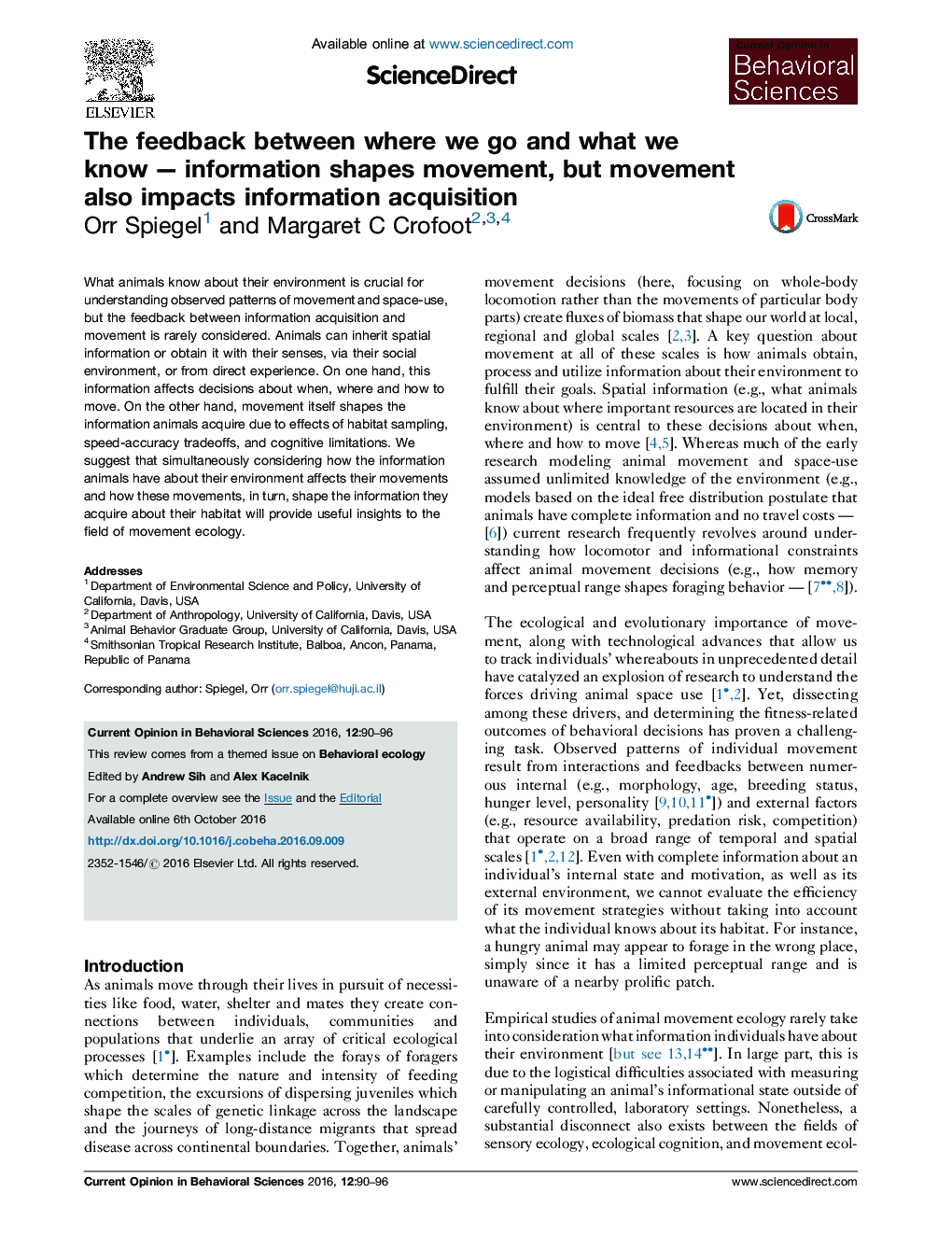| Article ID | Journal | Published Year | Pages | File Type |
|---|---|---|---|---|
| 6260414 | Current Opinion in Behavioral Sciences | 2016 | 7 Pages |
â¢Animals combine a few complementary mechanisms (e.g., memory and sensory perception) to obtain information.â¢Spatial information varies in precision and accuracy, affecting animals' movements.â¢This movement, in turn, shapes the spatial information animals encounter and obtain.â¢Hence, there is a feedback between animal movements and their spatial information.â¢Considering this feedback will facilitate linking movements with their implications.
What animals know about their environment is crucial for understanding observed patterns of movement and space-use, but the feedback between information acquisition and movement is rarely considered. Animals can inherit spatial information or obtain it with their senses, via their social environment, or from direct experience. On one hand, this information affects decisions about when, where and how to move. On the other hand, movement itself shapes the information animals acquire due to effects of habitat sampling, speed-accuracy tradeoffs, and cognitive limitations. We suggest that simultaneously considering how the information animals have about their environment affects their movements and how these movements, in turn, shape the information they acquire about their habitat will provide useful insights to the field of movement ecology.
Graphical abstractDownload high-res image (250KB)Download full-size image
